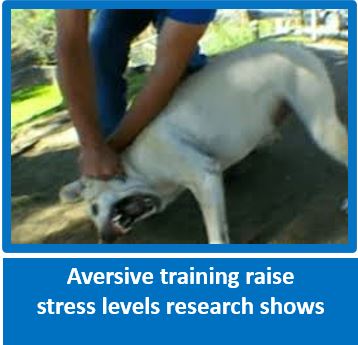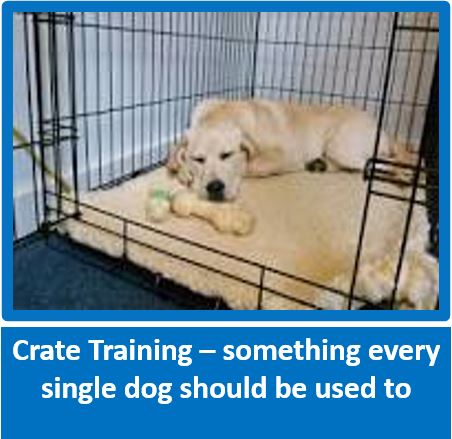How to maintain a healthy lawn with dogs
Courtesy of www.bradleymowers.com. These great guys put together this informative article for us so that we too, can have a great looking lawn, even with dogs. They have a great Blog with tons of interesting tips and tricks for all gardening enthusiasts that are trying to improve their lawn, or encountering problems with same - enjoy
Courtesy of www.bradleymowers.com. These great guys put together this informative article for us so that we too, can have a great looking lawn, even with dogs. They have a great Blog with tons of interesting tips and tricks for all gardening enthusiasts that are trying to improve their lawn, or encountering problems with same - enjoy
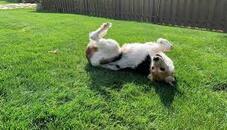
Few things are cuter than watching a dog romp through a lush, green lawn on a bright and sunny day. However, you might have been told that you have to let go of your dreams of having a beautiful lawn. After all, dogs are known for digging and needing to use outdoor areas for potty breaks. While having a dog does pose a few risks for your home’s landscaping, there are still lots of things that you can do to
protect it from your canine companion’s natural behaviors. Keeping a healthy lawn is as simple as implementing these strategies into your landscaping maintenance plans.
Use Frequent Watering to Prevent Yellow Spots
One of the biggest problems that dog owners have in their lawn is yellow or brown spots that look like dead grass. You can tell if it is your dog’s urine that is causing the problem by pulling on a few of the yellow blades. If the root system is still established, then it is likely that your dog’s potty breaks are affecting the lawn. Dog urine is high in nitrogen and salts, which can cause it to essentially leach the water out of the grass. Frequent watering helps to dilute the urine so that it has less of an impact. In addition to your regular watering schedule, you should also rinse away fresh urine spots with a garden hose so that the grass can stay lush and green.
Keep Your Dog Hydrated
Dogs should generally be given free access to water throughout the entire day. Making sure that your pup has a fresh bowl of water helps them to stay hydrated, and this has the effect of further diluting their urine so that it has a lower pH level. If you take your dog out for lengthy walks or romps at the dog park, then carry a collapsible water bowl. This will help to make sure that your dog stays hydrated and their urine doesn’t get too concentrated during times when you are away from home.
Pick Up Dog Waste Every Day
Some people choose to wait for a weekly scooper service to pick up dog waste. While this might be convenient, leaving the waste on the grass for too long can lead to more dead spots. Solid waste blocks the sunlight, and it can also contain salts and other components that kill the grass. Try to make it a habit to pick up your dog’s waste every time they go potty. Your lawn will look nicer, and you’ll also find that it helps your dog to quickly learn to only go where you show them. Don’t forget to pick up your dog’s waste from other lawns, too - you aren’t the only person trying to maintain a beautiful lawn!
Bring Damaged Spots Back to Life
Gypsum is a mineral that is known for improving soil and plant health in the agricultural field. You can buy gypsum that has been crushed into a fine powder so that you can sprinkle it on top of the soil. Although you can work it into the soil, just spreading it on top of the grass can help to bring yellow spots back to life. Gypsum works by neutralizing the salts in your dog’s urine so that the grass no longer dries out. Watering deeply after you apply gypsum helps it work even better.
Applying gypsum often works to restore slightly damaged grass, but there might be a few spots that are too far gone to return to green. Wait a couple of days after you apply gypsum to give it time to work. If you notice that the grass is staying yellow or brown, then you can lightly scratch up the dirt in that area and apply a handful of grass seed. Then, just return to watering frequently to encourage new grass growth.
Pay Attention To Your Landscaping Practices
As a general rule, healthy grass is less susceptible to the damaging effects of dog urine. Try to mow your grass no shorter than three to four inches. Taller, lusher grass helps to keep the urine from soaking deep into the soil. Mowing less frequently also helps to prevent the grass from developing burnt ends from too much sun that make yellow spots look worse. Making sure that your lawn mower blades are sharp further helps to protect the grass from damage that makes it harder to recover if your dog does go potty there.
Make Sure To Use Pet-Friendly Lawn Treatments
Lawn care often requires you to use special chemical treatments to keep weeds away and encourage optimum grass growth. While you can still use fertilizer and weed treatments, you may need to make a few changes to keep your dog safe. Some weed sprays and fertilizers are poisonous to pets. You’ll want to choose pet-friendly products whenever you can. In fact, you might even want to try using a few homemade fertilizer options such as sprinkling grass clippings on the lawn or using compost.
Keep in mind that store bought pet-safe fertilizers and weed sprays may still have special instructions for you to follow to further protect your pet. Typically, you will need to keep your dog out of the yard until the product has dried completely. It is also a good idea to remove your pet’s toys, food and water bowl to make sure that none of the residual spray makes it onto something that they will get in their mouth.
Establish An Acceptable Doggie Potty Area
Giving your dog a specific place to use the restroom can cut down on the damage in your yard. Start by picking out a designated area; many people choose a back corner of the yard or a space that is away from the house.
You can add gravel or mulch to this space to make cleaning up easier, and using a different type of ground cover will prevent you from seeing unsightly yellow spots like you would with grass. Once you’ve got the space set up, you can use a leash to take your dog right to their spot. If you make it a habit, your pet will learn to do their business there before they go off to play. This method takes time, but the effort is worth it when your dog only goes in an area of the yard that isn’t damaged by urine.
protect it from your canine companion’s natural behaviors. Keeping a healthy lawn is as simple as implementing these strategies into your landscaping maintenance plans.
Use Frequent Watering to Prevent Yellow Spots
One of the biggest problems that dog owners have in their lawn is yellow or brown spots that look like dead grass. You can tell if it is your dog’s urine that is causing the problem by pulling on a few of the yellow blades. If the root system is still established, then it is likely that your dog’s potty breaks are affecting the lawn. Dog urine is high in nitrogen and salts, which can cause it to essentially leach the water out of the grass. Frequent watering helps to dilute the urine so that it has less of an impact. In addition to your regular watering schedule, you should also rinse away fresh urine spots with a garden hose so that the grass can stay lush and green.
Keep Your Dog Hydrated
Dogs should generally be given free access to water throughout the entire day. Making sure that your pup has a fresh bowl of water helps them to stay hydrated, and this has the effect of further diluting their urine so that it has a lower pH level. If you take your dog out for lengthy walks or romps at the dog park, then carry a collapsible water bowl. This will help to make sure that your dog stays hydrated and their urine doesn’t get too concentrated during times when you are away from home.
Pick Up Dog Waste Every Day
Some people choose to wait for a weekly scooper service to pick up dog waste. While this might be convenient, leaving the waste on the grass for too long can lead to more dead spots. Solid waste blocks the sunlight, and it can also contain salts and other components that kill the grass. Try to make it a habit to pick up your dog’s waste every time they go potty. Your lawn will look nicer, and you’ll also find that it helps your dog to quickly learn to only go where you show them. Don’t forget to pick up your dog’s waste from other lawns, too - you aren’t the only person trying to maintain a beautiful lawn!
Bring Damaged Spots Back to Life
Gypsum is a mineral that is known for improving soil and plant health in the agricultural field. You can buy gypsum that has been crushed into a fine powder so that you can sprinkle it on top of the soil. Although you can work it into the soil, just spreading it on top of the grass can help to bring yellow spots back to life. Gypsum works by neutralizing the salts in your dog’s urine so that the grass no longer dries out. Watering deeply after you apply gypsum helps it work even better.
Applying gypsum often works to restore slightly damaged grass, but there might be a few spots that are too far gone to return to green. Wait a couple of days after you apply gypsum to give it time to work. If you notice that the grass is staying yellow or brown, then you can lightly scratch up the dirt in that area and apply a handful of grass seed. Then, just return to watering frequently to encourage new grass growth.
Pay Attention To Your Landscaping Practices
As a general rule, healthy grass is less susceptible to the damaging effects of dog urine. Try to mow your grass no shorter than three to four inches. Taller, lusher grass helps to keep the urine from soaking deep into the soil. Mowing less frequently also helps to prevent the grass from developing burnt ends from too much sun that make yellow spots look worse. Making sure that your lawn mower blades are sharp further helps to protect the grass from damage that makes it harder to recover if your dog does go potty there.
Make Sure To Use Pet-Friendly Lawn Treatments
Lawn care often requires you to use special chemical treatments to keep weeds away and encourage optimum grass growth. While you can still use fertilizer and weed treatments, you may need to make a few changes to keep your dog safe. Some weed sprays and fertilizers are poisonous to pets. You’ll want to choose pet-friendly products whenever you can. In fact, you might even want to try using a few homemade fertilizer options such as sprinkling grass clippings on the lawn or using compost.
Keep in mind that store bought pet-safe fertilizers and weed sprays may still have special instructions for you to follow to further protect your pet. Typically, you will need to keep your dog out of the yard until the product has dried completely. It is also a good idea to remove your pet’s toys, food and water bowl to make sure that none of the residual spray makes it onto something that they will get in their mouth.
Establish An Acceptable Doggie Potty Area
Giving your dog a specific place to use the restroom can cut down on the damage in your yard. Start by picking out a designated area; many people choose a back corner of the yard or a space that is away from the house.
You can add gravel or mulch to this space to make cleaning up easier, and using a different type of ground cover will prevent you from seeing unsightly yellow spots like you would with grass. Once you’ve got the space set up, you can use a leash to take your dog right to their spot. If you make it a habit, your pet will learn to do their business there before they go off to play. This method takes time, but the effort is worth it when your dog only goes in an area of the yard that isn’t damaged by urine.
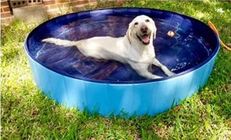
Keep Them Cool
Some digging behaviors are caused by a dog’s natural instinct to dig a hole to cool off. Dogs tend to enjoy the coolness of the dirt on a hot summer day. Set up shady areas for your dog where they can lounge comfortably without having to dig up a spot. Putting out a small wading pool with a couple of inches of water is another way to help your pup cool off during the dog days of summer.
Protect Delicate Plants and Garden Areas
You don’t have to give up on having a garden just because you have a dog. Instead, you can just get creative with how you protect the plants. First, you’ll want to make sure to only put plants that are safe for dogs in your yard. Then, you can use large shrubs or trees to create a natural fence around the garden. Most dogs won’t want to try to go through thick hedges just to dig up the plants.
If you prefer not to use bushes, then you can find aesthetically pleasing fences that go into the ground like stakes. These can be found in a variety of different colors and styles, and they can transform the look of your garden area. If your dog is a jumper, then you might want to choose a taller chain link fence to put around your plants. You can make chain link fences blend into the area by planting ivy that grows up the wires.
Stop Fence Digging
Dogs can often be escape artists that don’t take long to figure out that digging under a fence can lead to a short burst of freedom. Placing bricks or large rocks along the bottom of the fence line makes it impossible for your dog to dig under it. Some pet owners also have success with putting chicken wire down the bottom of the fence and securing it beneath the ground. This way, your dog will be stopped quickly if they do try to dig. Usually, dogs will stop digging once they find that it doesn’t lead to the reward of escaping from the yard.
Some digging behaviors are caused by a dog’s natural instinct to dig a hole to cool off. Dogs tend to enjoy the coolness of the dirt on a hot summer day. Set up shady areas for your dog where they can lounge comfortably without having to dig up a spot. Putting out a small wading pool with a couple of inches of water is another way to help your pup cool off during the dog days of summer.
Protect Delicate Plants and Garden Areas
You don’t have to give up on having a garden just because you have a dog. Instead, you can just get creative with how you protect the plants. First, you’ll want to make sure to only put plants that are safe for dogs in your yard. Then, you can use large shrubs or trees to create a natural fence around the garden. Most dogs won’t want to try to go through thick hedges just to dig up the plants.
If you prefer not to use bushes, then you can find aesthetically pleasing fences that go into the ground like stakes. These can be found in a variety of different colors and styles, and they can transform the look of your garden area. If your dog is a jumper, then you might want to choose a taller chain link fence to put around your plants. You can make chain link fences blend into the area by planting ivy that grows up the wires.
Stop Fence Digging
Dogs can often be escape artists that don’t take long to figure out that digging under a fence can lead to a short burst of freedom. Placing bricks or large rocks along the bottom of the fence line makes it impossible for your dog to dig under it. Some pet owners also have success with putting chicken wire down the bottom of the fence and securing it beneath the ground. This way, your dog will be stopped quickly if they do try to dig. Usually, dogs will stop digging once they find that it doesn’t lead to the reward of escaping from the yard.
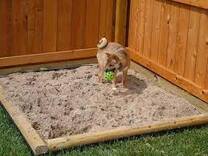
Make A Digging Spot
Some dogs simply need to dig as part of their natural instincts. If you have a dog with a high digging drive, then you might need to compromise. Dogs can enjoy playing in a sandbox just like kids. Just set up a few big pieces of wood and fill in the center with sand or soil. Then, put your dog’s toys in the space and let them know that it is okay to dig right there. If they try to dig elsewhere, just tell them “no” and take them to their designated digging spot. They’ll eventually learn that this is a safe place where they can engage in their digging behaviors.
Despite what you might have heard, you can keep a dog and enjoy having one of the prettiest lawns on the block. Although it may take some work, the effort is well worth it. On top of having a well-trained dog, you’ll benefit from having the perfect outdoor space to take your favorite canine companion out to play.
Some dogs simply need to dig as part of their natural instincts. If you have a dog with a high digging drive, then you might need to compromise. Dogs can enjoy playing in a sandbox just like kids. Just set up a few big pieces of wood and fill in the center with sand or soil. Then, put your dog’s toys in the space and let them know that it is okay to dig right there. If they try to dig elsewhere, just tell them “no” and take them to their designated digging spot. They’ll eventually learn that this is a safe place where they can engage in their digging behaviors.
Despite what you might have heard, you can keep a dog and enjoy having one of the prettiest lawns on the block. Although it may take some work, the effort is well worth it. On top of having a well-trained dog, you’ll benefit from having the perfect outdoor space to take your favorite canine companion out to play.


